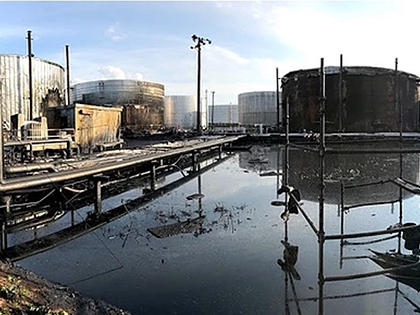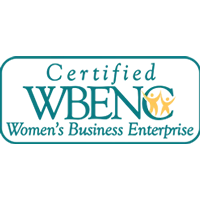The Problem
 In April 2018, an explosion at an oil refinery in the Midwest created a massive fire and ruptured a storage tank that released thousands of barrels of petroleum products into the surrounding area. Fortunately, there were no human casualties associated with the incident. The focus quickly turned from fire and rescue to clean up and environmental management.
In April 2018, an explosion at an oil refinery in the Midwest created a massive fire and ruptured a storage tank that released thousands of barrels of petroleum products into the surrounding area. Fortunately, there were no human casualties associated with the incident. The focus quickly turned from fire and rescue to clean up and environmental management.
Shortly after the incident, Wild Goose Chase (WGC) was contracted by the project’s lead licensed wildlife rehabilitator to spearhead the design and execution of wildlife protection and management efforts onsite.
Actions
WGC successfully designed and deployed a fullscale, multi-phase response effort to reduce the risk of oil exposure to avian wildlife and consult on a long-term wildlife management plan for the site. Throughout the project, strict safety protocols were maintained.
Emergency Response
Within days, WGC mobilized a team of avian wildlife experts and specially trained canines, supported by necessary equipment (including remote-controlled boats, kayaks, lasers and an all-terrain utility vehicle), to deter resident waterfowl from the incident area. This 24-hour, multi-approach deterrent strategy reduced the presence of avian wildlife that would have otherwise been at risk of exposure to oil contamination.
To further discourage avian wildlife activity in the impacted area, nest and egg depredation activities were conducted in accordance with state and federal standards.
Furthermore, as the heat generated from refinery activities and standing liquid (in this case, oil pools) are attractive to avian wildlife, WGC installed fencing and visual deterrents to discourage bird activity.
Rehabilitation Response
While WGC was executing its emergency response efforts, the team continually monitored the incident area for at-risk and oiled avian wildlife. Although all practical measures to protect wildlife were initiated as soon as safely possible, a number of birds were exposed to oil during the early stages of the incident – as well as a few individual birds that were exposed during ongoing clean-up operations.
WGC avian wildlife experts assisted additional licensed wildlife rehabilitators to monitor, humanely capture, wash and care for wildlife exposed to oil contamination. Birds were cleaned and properly conditioned back to health before being released at off-site nature areas designated by the appropriate state regulatory agency.
After two months of intensive wildlife deterrence, capture, care and monitoring, all oiled wildlife were accounted for and released.
Long-term Strategy
To mitigate future risks to avian wildlife at the refinery, WGC consulted on a long-term wildlife management plan, which, critically, included the strategic deployment of automated lasers in areas that experienced increased avian wildlife activity. Lasers were installed to both minimize potential wildlife exposure to contaminants and to reduce facility property and equipment damage (and the associated maintenance costs) caused by avian wildlife.
Impact
WGC operated for over 600 hours during this emergency response event without any safety infractions, incidents or near-misses, and is extremely proud of the impact the project has had.
Emergency Response
WGC’s 24-hour, multi-approach deterrent strategy reduced the presence of avian wildlife in the incident area by 94%, enabling response efforts to focus more on rehabilitation and future planning.
Rehabilitation Response
WGC’s rapid response and sustained efforts resulted in no wildlife casualties due to oil contamination.
Long-term Strategy
WGC’s consultative solution has become an industry standard to realize a more sustainable and harmonious relationship between properties and avian wildlife.


